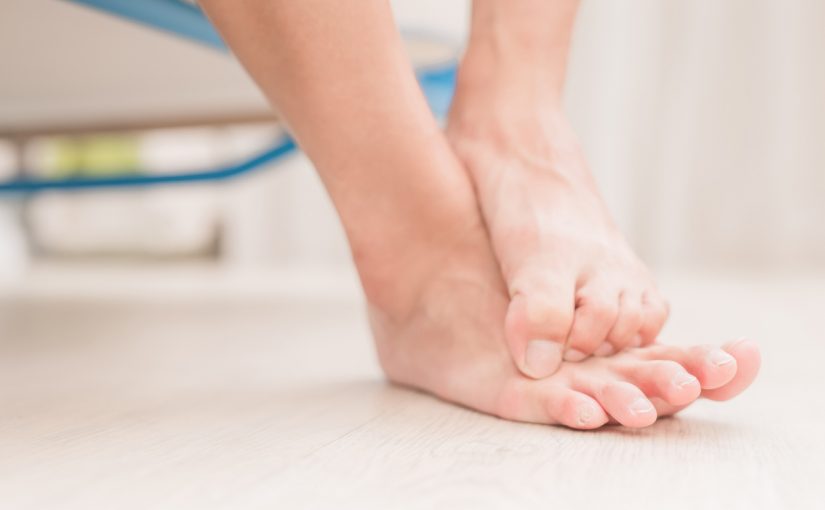Negative associations haunt the word “fungus”. Although the mushrooms on your combination pizza are delicious representatives of fungi, their negative reputation is unsurprising in the case of toe fungus.
What is Toe Fungus?
According to the Mayo Clinic, dermatophyte is the most common cause of fungal infections under your toenails. Once you’ve been exposed, usually via an infected person coming into contact with shared environmental factors, such as a puddle near a public swimming pool or a pedicurist’s tools, the fungus begins to thrive in the warm, moist, and protected environment provided by your toenails. As the fungus grows, it will feed on the proteins in your nails, causing the tell-tale signs of toe fungus.
Identifying Toe Fungus
Fortunately, toe fungus is pretty easy to visually identify. Discoloration is typically the first sign. Healthline suggests that patients look for the appearance of white/yellow streaks or yellow dots at the base of the nail.
As the fungus progresses, signs of damage will make it more noticeable. It may first present as a flaky-whiteness on the surface, followed by the crumbling and eventual loss of the nail.
Prevention
Limiting your exposure and keeping your feet dry are the best ways to prevent toe fungus from taking hold. Prevention is particularly important if you are over sixty-five or have a condition that limits proper blood circulation.
Keeping your shoes on in public places is common sense, but your local beauty parlor can be a bit trickier. Double-check that your pedicurist sterilizes all of their tools prior to each use and that they replace the liner on the foot tub in between clients. In addition, dissuade them from trimming your cuticles or aggressively pushing them back, which can damage your natural protection against infection.
Treatment
It is true that toenail fungus is difficult to get rid of once it’s set in. Fortunately, there are a few options for treatment. Many of the treatments available use oral antifungal medications; although, research out of Harvard Medical suggests that drilling into the nail would be a more effective delivery system.
However, there is a better, less painful method offered by Dr. Kamran Jamshidinia of Jamfeet. At his Los Angeles office, the board-certified podiatrist and foot surgeon in Los Angeles offers patented laser toenail fungus treatment to help patients get rid of toe fungus for good.
How Does it Work?
Jamfeet is one of only about one hundred offices in the United States to offer this brand-new procedure. During your visit, Dr. Jamshidinia will use a laser whose frequency has been adjusted to specifically target fungal cells.
It is a painless process, which has shown no adverse effects during clinical studies. What’s more, 88% of patients who received laser treatment showed significant improvement after one twenty five minute treatment.
Recovery
There really isn’t a recovery period for this procedure. In fact, you will be able to stand up and walk out the door immediately afterward. The only suggested step is to avoid getting a professional pedicure for a while to avoid reinfection. If you would like to give your toes a little makeover, then Jamfeet will happily sterilize your tools for you using an autoclave to ensure your safety.
Sadly, your toenails may not look pretty immediately, particularly if the fungus has been allowed to progress. If the nail(s) have suffered structural damage, then patients should be aware that it will take between six and nine months to fully regrow your toenails. If you’re in a bit of rush for strappy-sandal weather, then ask Dr. Jam about the Formula 3 Solution to help you accelerate nail growth.


